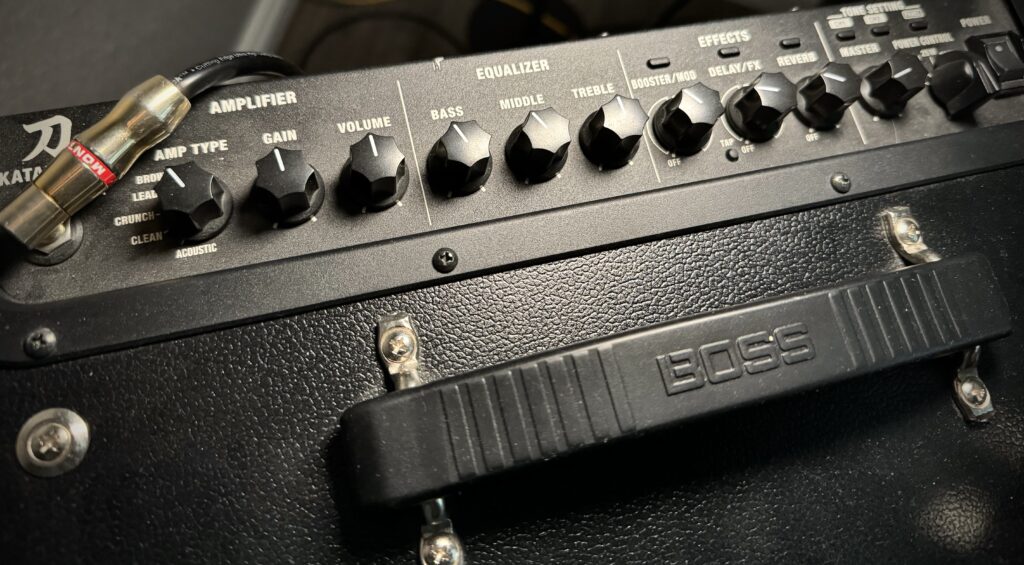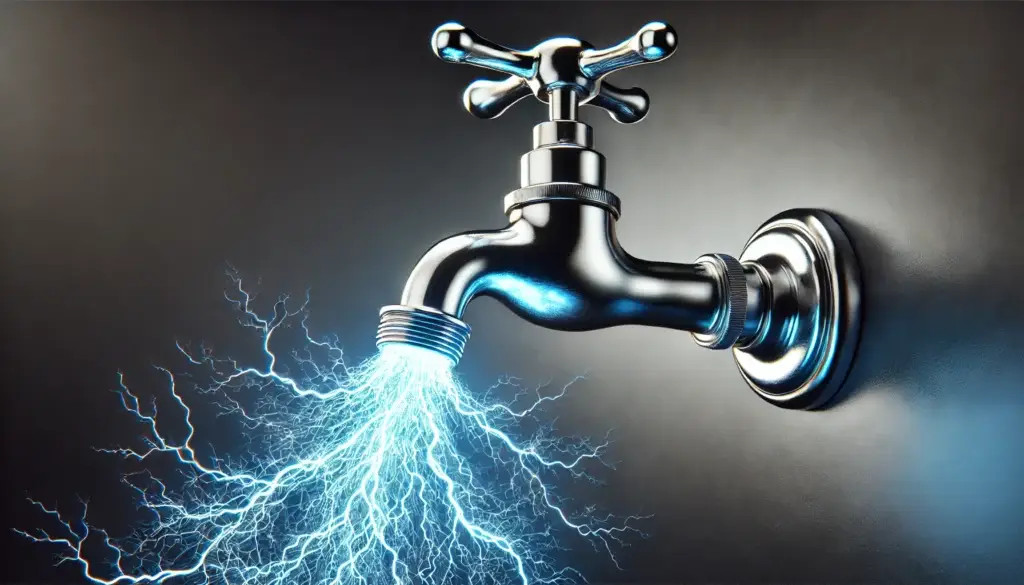***This post contains affiliate links. This means if you make any purchases using the hyperlinks below I may earn a commission, at no cost to you. Thank you for your support!
Gain and volume knobs. they’re similar but different right? Well when I was researching content ideas for posts I stumbled across a post on reddit where a user was asking about their amp and what the knobs mean. Totally valid question. We’ve literally all been there. And one of the answers made me want to scream. Effectively this user explained: “There are two ways to turn up the volume, one with the volume knob and the other with the gain and drive knob”….. THIS IS NOT TRUE! Now let’s talk about that 🙂
When it comes to music production, gain plays a crucial role in shaping your sound, much like how water pressure controls the flow through pipes. Just as you wouldn’t want your faucet blasting water out too forcefully or trickling too slowly, proper control of gain ensures your audio signal is just right. But what exactly is gain, and how does it fit into the world of sound? In this article, we’ll explore how gain works and why it’s essential for every musician and audio engineer to understand.
What is Gain?
In its simplest form, gain is the amount of amplification given to an audio signal. It determines how strong or weak that signal is before it reaches other parts of your audio system, such as speakers or amplifiers. Think of it like the water pressure in your home. Too much pressure, and you could have water flooding out uncontrollably. Too little, and you’re left with just a trickle. Similarly, with audio, controlling the gain is crucial for achieving the right balance without distorting or weakening the sound.
Gain vs. Volume: What’s the Difference

Many people confuse gain with volume. I understand why but there’s a reason they have different names and separate knobs. Hint; it’s cuz they aren’t the same. Above is the Boss Katana 50, a beast of an amp with plenty of volume and gain to go around! To stick with our water analogy, think of gain as the control knob that affects the pressure at the source. It’s responsible for how much water enters the pipes in the first place. On the other hand, volume is like adjusting the faucet. It changes how much of that water (or sound) is coming out at the end, without affecting how much was originally sent through.
In practical terms, gain adjusts the level of the audio signal before it’s processed, while volume controls the output level after the signal has been processed. Getting these two settings mixed up can lead to either a too-quiet or too-loud mix. Worse yet, too much gain can cause unwanted noise or distortion, just like too much water pressure can burst a pipe!
How Gain Works in Your Signal Chain
Now that we understand what gain is, let’s look at how it flows through your audio setup—your signal chain. Imagine your signal chain as a series of pipes, with each component (like your microphone, amplifier, or mixer) acting as a valve controlling the flow. The gain is what determines how much “water” (audio signal) passes through these valves at each stage.
- Microphone/Instrument Input: When you plug in a microphone or instrument, the signal is usually very weak. It’s like the water barely trickling into your pipes. Here, gain is applied to bring the signal up to a usable level. In some cases, you may need a preamp to boost this signal further (like turning up the water pressure for a low-flow faucet). I go into detail about preamps in this article.
- Mixer/DAW: The boosted signal then flows through your mixer or digital audio workstation (DAW). In this stage, controlling the gain is vital for ensuring that the signal remains strong enough to manipulate without distortion. Like in a complex plumbing system, managing the flow here is key to preventing leaks (noise) or bursts (distortion).
- Output to Speakers or Amplifiers: Finally, the signal reaches your output devices, such as speakers or amplifiers, where the volume is controlled. At this point, you don’t want to adjust the gain anymore—just like you wouldn’t fiddle with your water pressure after it’s gone through all the pipes. This is where volume comes into play, letting you control how loud the sound comes out.
Why Proper Gain Staging is Important
Just as improper water pressure can lead to plumbing disasters, incorrect gain settings can wreak havoc on your sound. This process of setting gain correctly at each stage in your signal chain is called gain staging. Each “valve” in your system needs to be adjusted so that your audio signal flows smoothly from input to output, with no distortion or unwanted noise. You do not want to just be adding more and more and more without having some form of check and balance. Otherwise the mixing process will be muddy and messy and over all just not fun.
Gain staging helps ensure that:
- Clear Signal: The audio signal remains strong and clear, without introducing noise.
- Headroom: There’s enough space (headroom) in the system to handle louder parts of the performance without causing distortion.
- Balanced Mix: Each component of your mix can be heard clearly, with no part overpowering another.
When gain is set too high, you risk overloading the system, causing clipping and distortion. When it’s too low, your signal may be too weak, leading to a noisy, thin sound that’s difficult to work with. Proper gain staging is like having just the right amount of water pressure in your pipes: everything flows smoothly.
Practical Tips for Setting Gain
Setting the right gain doesn’t have to be complicated. Here are a few tips to get you started:
- Start with the Source: Always begin by setting the gain at the source (microphone or instrument input). Make sure the signal is strong but not peaking or clipping.
- Watch Your Meters: Keep an eye on the input meters in your mixer or DAW. Aim for levels that are neither too low nor too high, staying in the green or yellow zones.
- Adjust As Needed: If you hear distortion or clipping, back off the gain. If the signal is too quiet, increase the gain slightly, but be mindful of noise.
- Leave Headroom: Avoid cranking up the gain all the way. Leaving some headroom ensures that your mix can handle any sudden volume spikes without distortion.
Conclusion: Gain is Your Audio System’s Water Pressure
So now that we have thoroughly covered plumbing AND gain, to recap; gain is like the water pressure in your home’s plumbing system. Too much pressure can cause damage, while too little leaves you with weak, unsatisfying results. By understanding and properly managing gain throughout your signal chain, you can ensure a smooth flow of sound from input to output, free of unwanted distortion and noise.
So, next time you’re adjusting your audio setup, think of it like turning the dials on your home’s water system. With the right amount of pressure—er, gain—your music will sound just the way it’s supposed to.

